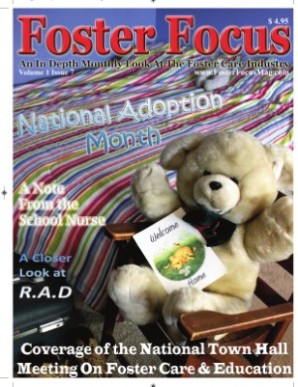As of May of last year, May is officially National Foster Care Month. I think this is an awesome way to bring awareness of how important the foster care system is in our communities. This month is dedicated to express the commitment for children and youth entering the foster care system, as well as to praise foster parents because of their heartwarming actions to care for children without homes. Added to that, everyone who contributes to make a child’s life better in health is applauded and recognized. Because of so, I feel that people will start to understand what issues are being presented, what is being done right now, and what must be done in the future. People just might step it up and lend a hand.
Check out President Obama’s proclamation below.
Presidential Proclamation — National Foster Care Month
NATIONAL FOSTER CARE MONTH, 2012
– – – – – – –
BY THE PRESIDENT OF THE UNITED STATES OF AMERICA
A PROCLAMATION
Childhood is a time for our young people to grow and learn, protected by their families and safe in their homes. But for almost half a million children who are unable to remain at home through no fault of their own, childhood can be a time of sadness, pain, and separation. These children need and deserve safe, loving, and permanent families who can help restore their sense of well-being and give them hope for the future.
During National Foster Care Month, we recognize the promise of America’s children and youth in foster care, and we commend the devotion and selflessness of the foster parents who step in to care for them. We also pay tribute to the professionals nationwide who work to improve the safety of our most vulnerable children and assist their families in addressing the issues that brought them into the child welfare system. In communities across America, dedicated men and women — in schools, faith-based and community organizations, parent and advocacy groups — volunteer their time as mentors, tutors, and advocates for children in foster care. We all have a role to play in ensuring our children and youth grow up with the rich opportunities and support they need to reach their full potential.
My Administration is committed to increasing positive outcomes for every infant and child in foster care, and to promoting a successful transition to adulthood for older youth. We are working to increase permanency through reunification, adoption, and guardianship; to prevent maltreatment; to reduce rates of re-entry into foster care; and to ensure all qualified caregivers have the opportunity to serve as foster parents. Through the Child and Family Services Improvement and Innovation Act, we are granting States more flexibility in supporting a range of services for children in foster care, including health care and treatment of emotional trauma. And through the Affordable Care Act, beginning in 2014, every State will be required to extend Medicaid coverage up to age 26 for former foster youth.
This year also marks the 100th anniversary of the Children’s Bureau, an agency within the Department of Health and Human Services that carries forward a legacy of protecting our Nation’s children and strengthening families through programs like the Permanency Innovations Initiative. Over 5 years, this initiative is investing $100 million in new strategies to identify permanent homes for youth in long-term foster care, including more than 100,000 children awaiting adoption, and to reducing time spent in foster care placements.
National Foster Care Month is a time to reflect on the many ways government, social workers, foster families, religious institutions, and others are helping improve the lives of children in foster care, and it also serves as a reminder that we cannot rest until every child has a safe, loving, and permanent home. Together, we give thanks to those individuals from all walks of life who have opened their hearts and their homes to a child, and we rededicate ourselves to ensuring a bright and hopeful future for America’s foster youth.
NOW, THEREFORE, I, BARACK OBAMA, President of the United States of America, by virtue of the authority vested in me by the Constitution and the laws of the United States, do hereby proclaim May 2012 as National Foster Care Month. I encourage all Americans to observe this month by dedicating their time, love, and resources to helping youth in foster care, whether by taking time to mentor, lending a hand to a foster family, or taking an active role in their communities.
IN WITNESS WHEREOF, I have hereunto set my hand this second day of May, in the year of our Lord two thousand twelve, and of the Independence of the United States of America the two hundred and thirty-sixth.
BARACK OBAMA




 I think having a magazine out about foster care is such a good recognition method. Slowly the distribution of “Foster Focus” can increase and bring awareness to more communities. A magazine talking about the issues presented, as well as advertising proposals and programs available is needed.
I think having a magazine out about foster care is such a good recognition method. Slowly the distribution of “Foster Focus” can increase and bring awareness to more communities. A magazine talking about the issues presented, as well as advertising proposals and programs available is needed. 
